For reverse engineering this week, I took a look at two different night lights – one that turns on and off with a button (and has a charged battery), and one that plugs into the wall and automatically turns on and off depending on the ambient light.
The IKEA night light (which retails for about $14.99 now) is comprised of a soft silicone outer shell, a hard three-part inner shell, circuit boards, LEDs, a button, various resistors, and a battery pack and power input.
1. Silicone outer – single piece injection molded $0.50?
2. Interior shell – three parts, injection molded rigid plastic $0.50?
3. NiMH battery 3/6V 550mAh – $11.99 on DigiKey
4. Class 2 Battery Charger $18.99 on DigiKey
5. Button $1.49
6. 9 Resistors+ $0.40
7. LEDs x4/ green $1.52
8. wire and circuit boards $0.50
TOTAL for parts vs. retail cost // $35.89 vs. $14.99
The photocell nightlight was interesting because it has a very simple sensor mechanism – and because once I took it apart, it was clear that there was an absolute economy of materials. For example, the copper clip that keeps the circuit board and photocell sensor in place also serves as the contact between power and the lightbulb.
There were delightfully few moving parts in this construction.
1. clear plastic cover/diffuser – injection molded $0.50?
2. Body – three pieces white plastic – injection molded + clear plastic lens for photocell $0.50?
3. candelabra-size small light bulb – clear $0.68 @ Antiquelampsupply.com
4. copper band / copper contact clip – $0.10?
5. 2 loose prongs for outlet – $1.28/digikey
6. 1 resistor – 27 ohm – $0.128/digikey
7. Light sensor/ Photocell – $1.58/digikey
8. circuit board/wire $0.50?
9. 1 screw – $0.02
TOTAL for parts vs. retail cost // $5.29 vs. $1.75
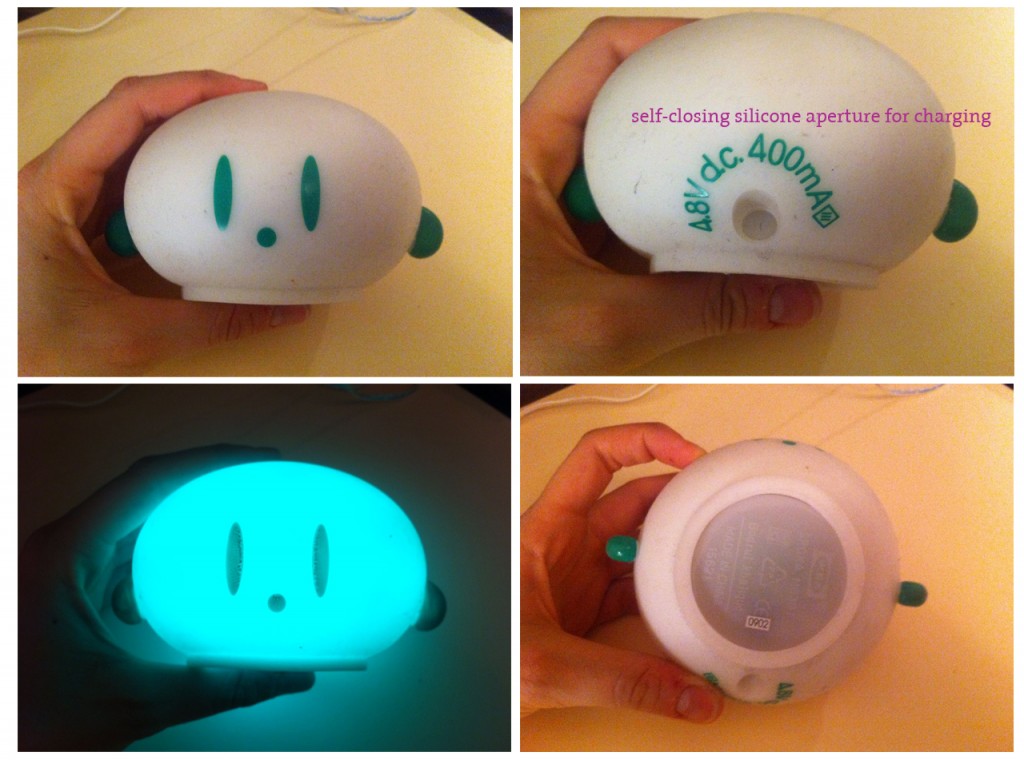
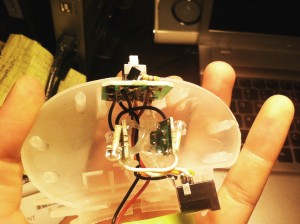
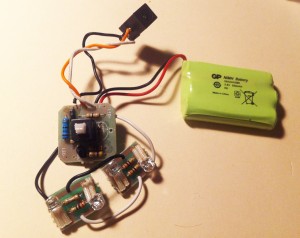

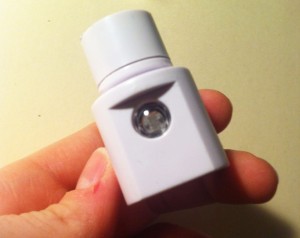
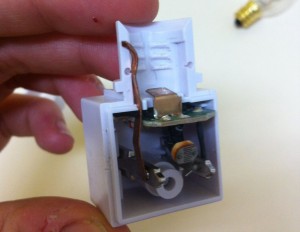


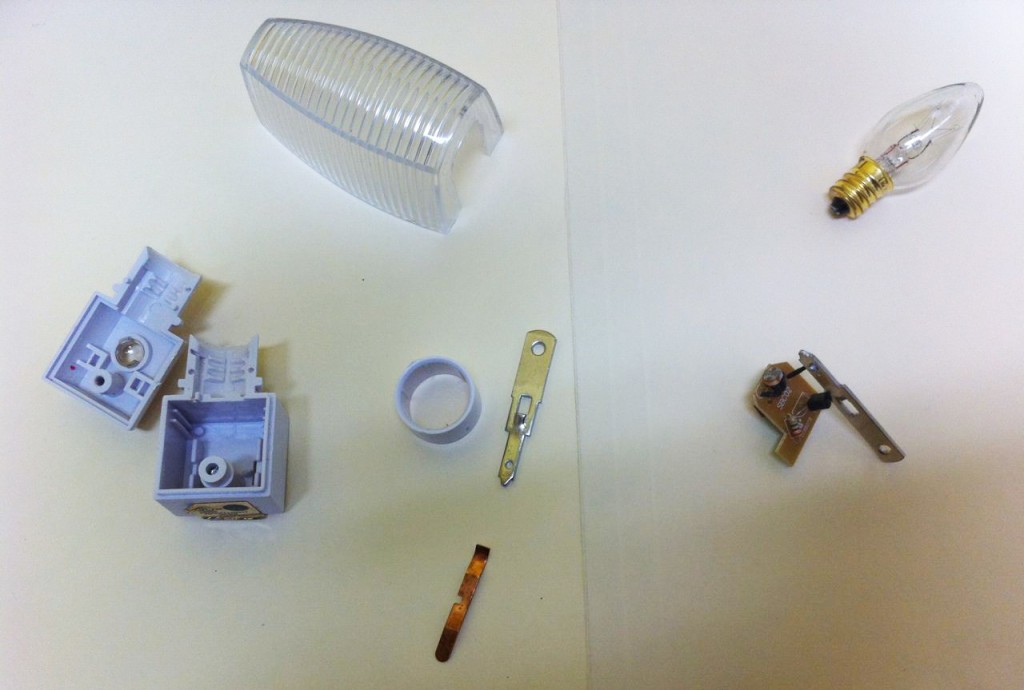
I am not quite sure when you wrote this post (I can’t seem to find a date), but I have a more recent vintage Spoka disassembled on my desk and it contains a PIC microcontroller for controlling the LEDs.
But there is something else worth calling out as a bit unusual for modern consumer electronics. Everything is through hole, there isn’t a surface mount component to be found. Nor are all the components flush, implying that machine placement wasn’t used on at least some of the parts.
Finally, and also quite unusual, four of the wires are soldered onto posts onto the trace side of the PCB, as opposed to running though the board. Also, the boards look hand trimmed.
In a time when cost savings normally come from designing for automation, the Spoka is a throwback to boards I used to see in the 80s. I can only imaging they are made in small shops by companies that are using old equipment.